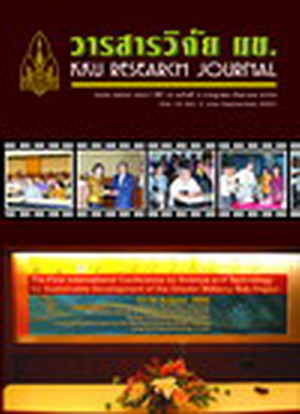Antimicrobial Peptides Derived From Lysozymes
Main Article Content
Abstract
This work aimed at the purification and characterization of antimicrobial peptides from C-type lysozyme (soft shelled turtle lysozyme; SSTL) and G-type lysozyme (goose egg white lysozyme; GEWL) which were purified and then hydrolyzed by pepsin and trypsin. The hydrolysated peptides were purified by HPLC techniques. The tryptic peptides derived from SSTL showed broad spectrum activity to both Gram-positive bacteria (S. aureus and S. epidermidis) and Gram-negative bacteria (E. coli, K. pneumoniae and V. cholerae). In the same manner, tryptic peptides from GEWL demonstrated effective activity against S. epidermidis, S. typhi and V. cholerae. The amino acid sequence of tryptic peptides from SSTL were deduced by MALDI-TOF mass spectrometry. One peptide had the sequence I-V-S-D-G-D-G-M-N-A-W in the residues 98-108. Another peptide was determined to have the sequence H-G-L-D-N-Y-R corresponding to the amino acid residues 15-21 of lysozyme. Further, the primary structure of tryptic peptides from GEWL is currently under evaluation. The results obtained in this work indicate that C-type and G-type lysozymes possess antimicrobial peptides in their primary structure and they can be released by protease hydrolysis.


